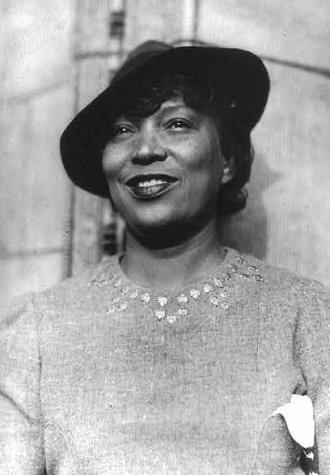Celebrating Black Excellence: Zora Neale Hurston
February 19, 2019

“When Zora was there, she was the party,” Sterling Brown said.
Zora Neale Hurston, the life of every party, and the woman who gracefully walked into every room she entered fashionably late, was born on January 7, 1891 in Notasulga, Alabama. She was born to a preacher, John Hurston, and a Christian curriculum director, Lucy Hurston. As a child, her distinct characteristic of ‘rambunctiousness’ was distinguished by her father, who attempted to tame her exuberant spirit. Her mother on the other hand, encouraged her to “jump at de sun” and express herself in the best way she could.
Neale Hurston moved to Eatonville, Florida as a toddler with her family. She grew up in a relatively successful, black neighborhood. Most of her neighbors were elite people instituting laws, teaching, and preaching. As a result of her surroundings, she aspired to gain her own success by first obtaining an education. Hurston attended high school in Eatonville until her mother, Lucy Hurston, passed away. When she passed away, her husband, John Hurston, quickly remarried and spent nearly all of his income on his new wife. It is said that Hurston and her step-mother did not see eye-to-eye, and Hurston nearly killed her in a fist fight. In the midst of this hostility, Hurston found it difficult to continue her high school education, so she joined a traveling troupe, Gilbert & Sullivan, as a maid, and eventually, became a lead singer.
To continue her education, Zora Neale Hurston trekked to Baltimore, Maryland in September 1917, at the age of 26, and attended Morgan Academy. Although she was well over the age of a high school student, Hurston lied, saying that she was 16, in order to obtain her desired education. By virtue of her structure, she was not suspected of lying, and was able to receive the education she sought. Shortly after receiving her high school degree in 1918, she went on to attend Howard Prep School in 1919, and then to Howard University to receive her associates degree in 1924. In 1925, she was offered a scholarship to Barnard College, and received a B.A. in anthropology, and later went on to receive her Ph.D in anthropology from Columbia University.
Zora Neale Hurston became a renowned figure in the early 20th century during the Harlem Renaissance. She published various works– research studies, poems, literature and so forth– that brought fame to her name. Her most renowned book, Their Eyes Were Watching God, was composed in 1937 in seven weeks while she was in Haiti. The book details various aspects of her life’s trials and tribulations through the eyes of the protagonist, Janie Crawford. Although the book was initially poorly received, now it has become an integral part of American literature.
The legacy of Zora Neale Hurston has carried on through various African-American women writers, but most notably, Alice Walker. In regards to her adoration of Their Eyes Were Watching God, Walker stated that “there is no book more important to me than this one.” Walker has been heavily influenced by Hurston, stating that “unless I c[o]me out with everything I ha[ve] supporting her, there [i]s every chance that she would slip back into obscurity.” In addition to these statements, Walker made the choice to mark Hurston’s grave in 1973 after it was said that the grave marker was too expensive for Hurston’s family. Through these comments and efforts, it is shown that Walker has a great appreciation for Hurston, and it is her desire that other readers appreciate Hurston too.
As one of the most successful writers of the Harlem Renaissance, Zora Neale Hurston has inevitably made her mark with the progression of American literature. She paved the way for future authors like Alice Walker to be bold and confident in their works. Her efforts and legacy inspire many new contemporary authors to sum up the courage to be dauntless with their words.







